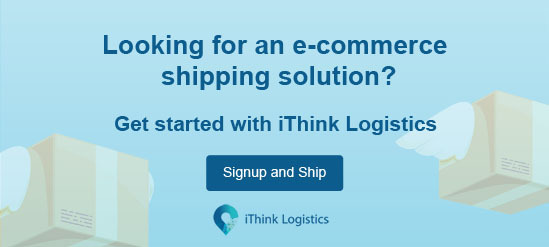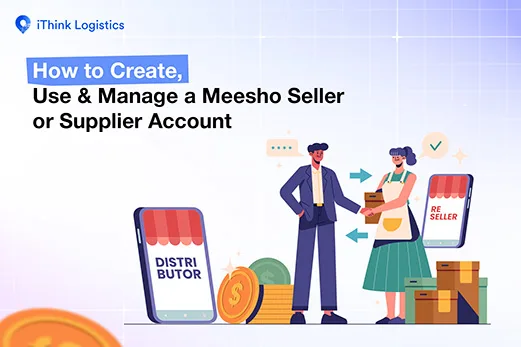Technologies have shaken the maritime industry especially the shipping zones management from all angles. The biggest impact in the recent past that has caused a substantial change in the IT and digitalization in the industry is the cutting-edge technology. These technologies have holistically enhanced the operations and performance allowing the ship owners and conglomerates to control everything from ship emissions to installation of smarter fleet management. The processes that are included in the industry have also been subjected to a state of transcendence with developments in robotics, digital currencies, and deep learning.
- Are Shipping Zones Really Important?
- Important Factors of Shipping Zones
- Increasing the order fulfillment value
- Reducing shipping cost
- Automating order fulfillment process
- Encouraging companies to offer free shipping
- Making delivery faster
- Reducing the supplier-consumer gap
- Shipment tracking systems
- Conclusion
Several technologies like multiple computer-based technologies have resulted in numerous curveballs that have changed the course of operations like shipping zones and the business of shipping. With much greater levels of automation and digitalization, detection and fulfillment have become much simpler and complete every last-mile delivery. When the aspect of shipping zones is considered, few characteristics can be discussed and elaborated.
Shipping zones have been a crucial aspect of logistics and order fulfillment, as it has a massive impact on shipping costs, delivery time and shipping efficiency. Each and every courier company defines its shipping zones based on various factors such as distance between the pickup and destination, and regional taxes.
Not only does defining Shipping Zones assist in standardizing prices of packages for carriers, but it also helps eCommerce business owners to select what they would like to ship to a single zone or not. For example, several sellers may not want to ship their cargo to certain pin codes due to communal tension in the local area, and so on. With a pre-defined shipping zone, the seller has the option to opt-out of these shipping zones.
Are Shipping Zones Really Important?
When understood that the zone shipping is important, it helps in strategizing the eCommerce fulfillment to fulfill customer expectations in concern with the fast and affordable product deliveries. Apt knowledge of shipping zones can not only help increase efficiency by reducing distance and shipping transit time, but it also reduces shipping costs, improving sales, directing to a higher growth rate and returns for the business.

Zones are calculated based on the origin of the package. This could imply that two different points of origin, which are shipping to the same destination, can be shipped via completely different zones. The management will match the customer to a single zone utilizing the cargo’s shipping address and present the shipping methods within that zone to them. The standard shipping methods are the flat-rate method, free shipping or Local delivery. The determination of shipping zones is very simple in recent times.
It can be detected simply by entering the zip code of the origin and the zip code of the destination to which the package needs to be shipped, and the shipping zone for the same can be obtained.
Shipping carriers utilize the zones’ details to calculate rates for certain services. Many services use a flat rate; they charge the standard price regardless of the destination. Usually, for services that have been zoned, the greater the zone, the higher the cost in most cases. Depending on the carrier and service users, and the source and destination zip codes, exact shipping rates will also vary on order weight and dimensions.
However, the heavier a package is, the higher the price increase will be as the zones increases. Naturally, the shipping cost will be lower if the package is shipped from a location nearer, to the end customer.
The speed of delivery plays a vital role in the eCommerce industry today. If an order is shipped nearby, for instance, inside the same city, the delivery speed of the package will be much higher than the cargo that is shipped to a farther destination. Many customers cancel an order due to slow shipping, directly affecting the business. Reducing transit time is highly important because slow delivery can affect the customer experience.
Important Factors of Shipping Zones
Fulfillment house or a fulfillment center is a modern term for a packing warehouse. It is more viable to outsource fulfillment, as compared to self-fulfillment, as there is more flexibility when choosing a fulfillment center location. The location from which the orders are shipped should be near the customers. If the customers are geographically distributed, outsourced order fulfillment in large cities can help to reach a high volume of people faster, as opposed to shipping from a less densely populated area that can’t efficiently reach as many people. Thereby reducing the transit time efficiently.
Find out the reasons to outsource logistics to a third party.

Increasing the order fulfillment value
One way to reduce shipping costs is by increasing the number of fulfillment centers to store, pick, pack, and ship the inventory. This way one can complete orders from the location that’s nearest to the customers, enabling to effectively decrease the total transit time and offer low-cost shipping options.
Reducing shipping cost
Utilizing three fulfillment centers as compared to a minimum of one would enable more orders to be shipped to lower zones. In other words, the typical shipping cost per order would dramatically decrease with the addition of another fulfillment center. Additionally, using multiple fulfillment centers can offer two-day shipping via ground in more regions, instead of depending on expensive air shipping.
Automating order fulfillment process
A third-party logistics (3PL) service can improve fulfillment by providing a geographic footprint that most eCommerce companies could not afford on their own. A tech-enabled 3PL has the ability to automate the order fulfillment process by using powerful deep-learning algorithms that route each order to the optimal fulfillment center. As each order is shipped, the tracking information and each step of the shipping process is sent to the store and shared with the customer.
Encouraging companies to offer free shipping
These Fulfillment centers encourage companies to offer free shipping when it can be so expensive to send orders to high zones. Ecommerce companies that incorporate free shipping into their pricing strategy must be strategic in their decision to ensure it won’t hurt their margins. They have to ensure that the cost of shipping is integrated into the product price considering the average shipping cost; they require a minimum amount to be spent as it will increase the average order value or they reduce the number of zones they ship to.
Making delivery faster
A 3PL company with multiple fulfillment locations can make a huge difference in the ability to ship orders quickly and affordably. By stocking the inventory in distribution centers closer to more customers, orders have fewer miles (aka fewer shipping zones) to travel, making shipping faster and cheaper.
Two-day shipping is the process of sending packages from the shipping carrier to the receiver within 2 days. In eCommerce, offering 2-day shipping may be a common practice for sellers to make sure online orders are delivered to the consumers with a fast turnaround.
Reducing the supplier-consumer gap
The companies are working towards reducing the gap between the supplier and the consumer with great momentum and efficiency. The evolution of technology in logistics has bridged the gap between the customer and the service provider by creating synergy through enhanced awareness and communication. In a time like the present, where everyone is accustomed to everything available online and at the edge of the fingertips, the shipping industry must match up with the other logistics and supply chain enterprises.
A very few megalomaniac players like Amazon have pioneered the science of fast-paced delivery service. They offer services wherein delivery is initiated within an hour of the order. Packages are delivered within an hour to two days depending on where the destination lies. Enhanced technology has also increased performance efficiency and productivity in the shipping zones, minimizing the number of errors.
The advances within the field have resulted in improvement among all areas of the logistics industry like trucking transportation, international transportation (ocean and air), supply chain management, and shipment tracking. In a discussion about the technologies that have left an imprint on the logistics, eCommerce and shipping zones aspect of the industry, some mentionable systems are:
Shipment tracking systems
Up until now, customers had to book shipments manually, and received an estimated delivery date and hoped that it would reach on time until contact via other means was made to cross-check. Today, with advancements in internet and software, customers have access to shipping modes, routes, zones with tracking available all round the clock, uplifting the customer from the dark. This enriched customer service has worked out for both companies as well as the customers as it provides total awareness. The shipment tracking system shows the different processes involved in the shipping zones, allowing the customers to monitor and manage the shipments. It provides notifications, messages, customizable reporting, and customer accounts with much-needed details.
Internet of Things (IoT)
Wi-Fi and the internet connect everything to everyone and have obtained the name Internet of Things (IoT). IoT, after its application, has opened many doorways for the shipping zones management and supply chains among eCommerce giants to improve, reduce costs, and delays by avoiding the risk of loss. Sensors are installed in the ships and cargos, which are interlinked with alarm systems or dispatchers that can monitor and track the sensors. These sensors can identify the geographical details as well as possess the details of the cargo in the ships assisting the crew to gain insights on the zones where the packages need to be dropped off.
Enhanced GPS Accuracy
With IoT and enhanced GPS accuracy, there is no reason for the customer to contact the management as the process is digitized with the exact location of the package being displayed in real-time. The accuracy of these GPS devices have drastically heightened, it has helped the cargo ships stay on track with information about the routes as well. The advanced accuracy of GPS has allowed increased productivity of the carriages and in the number of satisfied customers, by tracking ships’ locations and improving hauls via access to updated traffic data.
Social Media
Social media is aptly called the double-edged sword of the digital age. It has the power to help and also curb the development of enterprises. When it comes to cross-communication, it has turned out to be the fastest method of communication medium. These platforms have the capacity to disseminate information to a large crowd of keen listeners within seconds. It is also the easiest and the most efficient way for the management to establish connections and address queries by the customers. Social media can also be utilized to communicate any urgent information about the shipping zones, report news about the same and acquire quick responses from customers.
According to Hootsuite, 59 percent of Americans who are active on social media account is in alignment with the fact that customer service via social media is easier for addressing questions and concerns getting resolved. By using multiple platforms to provide news and updates to the customers, management is always one step ahead.
Conclusion
Shipping zones are an essential part of the shipping Industry. Though it appears complicated, the determination of zones, choosing of methods and the engaging of fulfillment centers has become extremely simple owing to the all configured and updated shipping methods and plug-ins available.








